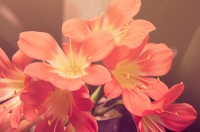
How it all began
Canna is originally a plant from the tropics. You can find this exotic plant species in the tropical and subtropical regions of the “New World” of Latin America and even further down south in Northern Argentina. Even though all botanic Canna varieties are originally from the “New World”, various varieties can now be found in almost all subtropical and tropical regions across the world, as they have followed mankind on its travels throughout the centuries. The first Canna variety that was discovered in Europe was the Canna Indica. The seeds from this species were imported in the 16th century from what was known then as the West Indies.
Nowadays, Canna can be found in almost every type of climate. Even above the polar circle where the Summers are short but the days long. The rapid growth of Canna allows this, as long as the plants get at least 6 – 8 hours of sunlight a day during its growing season and they are protected from the cold during wintertime.
Fun facts
Canna seeds are used as beads in necklaces and other jewellery. The seeds are also known as Indian Shot. They are that solid, you can shoot through wood using a gun. The story goes that soldiers used Canna seeds as ammunition in the 19th century during the Indian Rebellion when they ran out of their normal bullets. This is also one of the ways how Canna was spread in nature.
General information
Cannas remind you of exotic countries and regions, beautiful beaches, sultry nights, flower beds, the sun, heat and happiness. CANNOVA® now also brings this exotic plant to our very own temperate climate. With its extravagant flowers, it is a real eye-catcher in every garden or balcony. The CANNOVA® can be planted in large containers or in gardens. It also does really well alongside a pond. Make sure however, that the water temperature stays above 10 degrees Celsius.
CANNOVA® flowers throughout the Summer and can stand temperature levels between 5°C and 35°C. Large and sudden changes in temperature however, should be avoided at all times. The plants are in great form if they are placed in direct sunlight or partially shaded areas with damp soil to treat their roots. So make sure to water them regularly and do not let them dry out. When the blooms have finished flowering, they can be removed very easily. Excess roots can be removed when the plants are getting too big or too wide.
Dormancy
During cold Winters, it’s best to let the rhizomes of the CANNOVA® go dormant indoors. After Autumn, the cold temperatures will turn their foliage black. The stems and foliage need be cut back to 15cm above the base and the remainder of the plant including roots can be pulled out of the ground for dormancy. If the plants are planted in containers, just simply move them inside. Store the plant bases in lightly damp soil under frost free circumstances but make sure the storage temperature doesn’t rise above 10°C. Leave plenty of space between each individual root ball. They are ready to be re-planted next Spring in containers or gardens.

